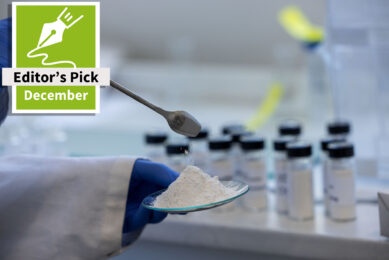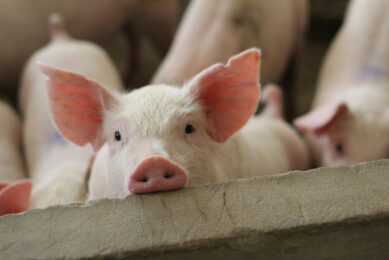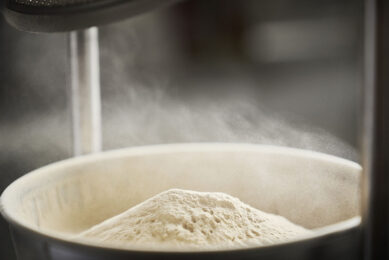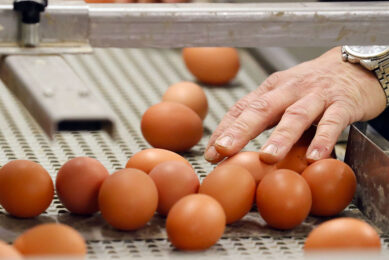Nutritional strategies for hyperprolific sows
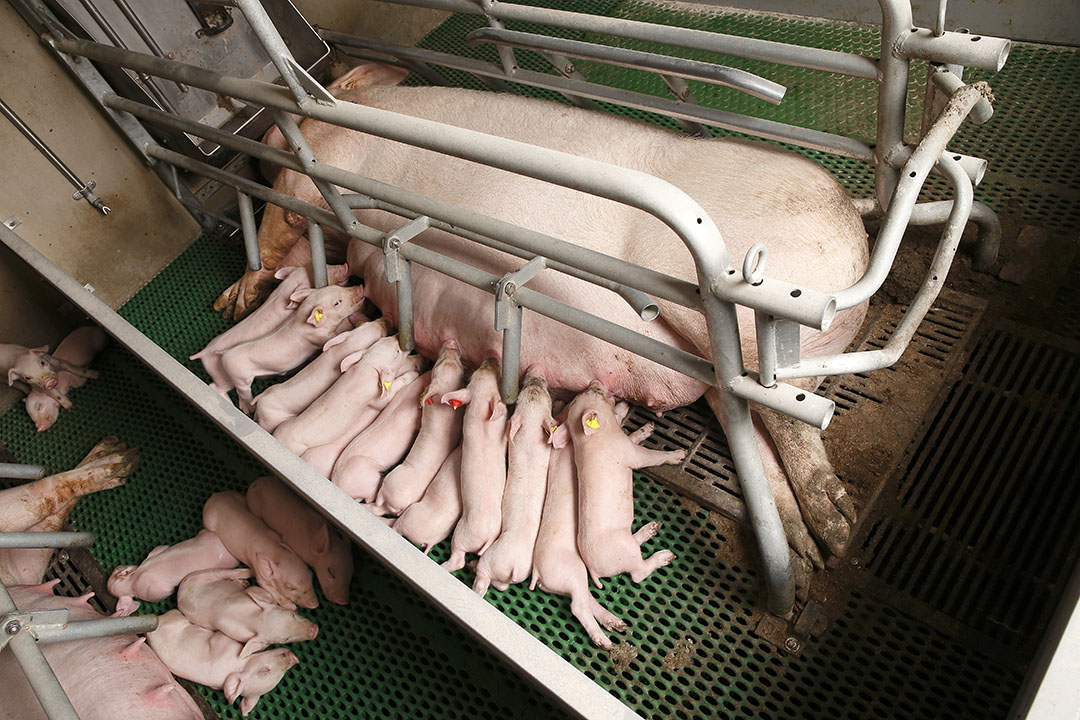
During recent years, scientific studies and field trials have demonstrated optimal reproductive performance and development of the progeny when using bis-chelated organic trace minerals in hyperprolific sow diets.
Intensive genetic selection has greatly improved sow reproductivity in recent years giving rise to more prolific sows and having 30 piglets per sow per year is starting to become common practice. However, this progress has also been coupled with several downsides, such as high sow mortality rate, high culling rate, and reduced piglet birth weight and uniformity. These downsides definitively affect the welfare and the profitability of the farm. This means that high prolific sows need other (adjusted) management strategies. Animal nutrition is an important part of this, thus, new nutritional strategies have been developed in response to these challenges.
Maternal feeding to reach full genetic potential
The diet a hyperprolific sow receives is important because if the foetus cannot obtain the nutrients needed for its development, foetal growth and performance can be compromised. New scientific knowledge has provided improved data to better understand the relationships between nutrition and reproduction. It is known that maternal nutrition impacts muscle development, gut development and nutrient absorption, immune status, and disease susceptibility in piglets, which significantly contributes to the economic performance of the progeny. Trace minerals such as zinc, copper, and manganese play an essential role in the foetal and postnatal development as they are necessary for the optimal development of the immune system as well as muscle growth.
Superior organic trace minerals are more heavily utilised to ensure that the modern hyperprolific sows maximise their genetic potential. Metal methionine hydroxy analogue chelates (MMHAC), developed, manufactured and commercialised under the brand Mintrex® trace minerals from Novus International, Inc., are the only bis-chelated trace minerals available worldwide (hereafter called trace mineral product). This feed additive is unique in that the trace mineral (zinc, copper and manganese) are bonded to two molecules of the hydroxy analogue of methionine. This chelation technology improves the bioavailability of the metal, protecting it from antagonisms in the gut and helping its absorption and metabolic utilisation. Consequently, 100% of the inorganic trace minerals (ITM) in the diet can be replaced with a lower inclusion rate of MMHAC. This strategy has a promising future in terms of optimising sow reproductive performance while minimising environmental excretion, particularly as more areas are tightening regulations on environmental impacts in the animal agriculture industry.
Modulation of gene expression
A study carried out in collaboration with North Carolina State University (NCSU-U.S.A.) examined the effects of supplementing sows’ diets with MMHAC zinc, copper and manganese, specifically analysing the epigenetic change in the offspring’s muscle and gut tissue. Epigenetics entails changes in gene expression that do not imply alterations in the underlying DNA sequence. Epigenetics involves changes in the animal’s phenotype, but not in its genotype. In the NCSU trial, 60 sows on day 35 of gestation were assigned one of two diet treatments that only differed with respect to the source of minerals in the diet: 1) ITM (CuSO4, MnO, and ZnSO4) and 2) MMHAC.
Figure 1a-b – Gene expression of NFκB P50 subunit (1a), NFκB P105 precursor (1a), and TGFβ1 (1b) in the jejunum of piglets at day 18 of lactation. Means with different letters differ at P < 0.05.

On days one and 18 of lactation, two piglets per litter were culled to take samples of the longissimus dorsi muscle and jejunum to measure the global DNA methylation, the histone acetylation and the gene expression. The sows that received MMHAC tended to exhibit less bodyweight loss during lactation (P = 0.05) and tended to produce piglets with a greater bodyweight at 18 days of age (P = 0.09). Supplementation of MMHAC was found to downregulate NFκB and TGFβ1 gene expression compared to ITM (Figure 1), which supports reduced intestinal inflammation and improved gut health in progeny piglets. MMHAC supplementation promoted skeletal muscle growth of longissimus dorsi in the piglets by upregulating histone H3K9 acetylation and by downregulating MRF4 gene expression, which explains in part the mechanism whereby MMHAC improves loin eye area and depth (Figure 2). These findings support the hypothesis that the increase of histone acetylation could enhance skeletal muscle growth and regeneration by improving hypertrophy.
Improved performance
A two-year field observation led by Dr Antonio Palomo (Universidad Complutense de Madrid, Spain) was conducted on sow productivity, sow health, and litter size and productivity in commercial conditions. The trial involved a total of 125,650 sows from 82 different commercial farms in Spain. Sow breeds (Topigs, PIC, Hypor and Danbred) were equally distributed among the treatments. The three dietary treatments were: a) ITMs (100 ppm Zn from ZnO, 25 ppm Cu from CuSO4, 45 ppm Mn from MnO); b) Other OTMs (in total, same level as ITM but 50 percent replacement with other OTM; complexes of amino acids and peptides); and c) MMHAC (50 ppm Zn from Mintrex® Zn, 10 ppm Cu from MINTREX® Cu, 20 ppm Mn from Mintrex® Mn). Results showed increased sow reproductive performance compared to ITMs and other OTMs (Table 1).
MMHAC was shown to significantly decrease the mortality rate of sows compared to both ITMs (-15.0%) and other OTMs (-6.3%) (P < 0.01). The retention rate until parity three increased in sows fed MMHAC (73.93%) vs. ITMs (67.18%) and other OTMs (70.69%) (P < 0.01). Furthermore, compared to ITMs, MMHAC significantly improved (P < 0.05) the farrowing rate (+1.0%), replacement rate (-5.2%) and locomotion culling rate (-20.2%). Additionally, MMHAC significantly increased the number of live born piglets compared with ITMs (+3.6%; P < 0.01). Moreover, MMHAC significantly improved the litter size compared with ITMs and other OTMs in relation to number of stillborn and weaned piglets (P < 0.01). In the study, MMHAC reduced the number of stillborn piglets -41.4% and -11.1% compared to ITMs and other OTMs, respectively. Thus, the number of piglets weaned per parity was significantly higher for sows receiving MMHAC (n = 12.1) than for those fed ITMs (n = 11.5) and OTMs (n= 11.8). A previous trial conducted at the Carthage Veterinary Services (USA) also showed very positive results on progeny performance when using MMHAC in sows. Supplementation of MMHAC during gestation and lactation added 1.8 more weaned piglets per litter until parity four and piglet birth weight increased by 8% compared with ITMs. It was also shown that MMHAC supplementation during gestation reduced the percentage of low birth weight (≤ 1.1 kg) piglets within a litter by 7.2% compared with ITMs, as well as improved litter uniformity. Regression analysis indicated that feeding ITMs to sows during gestation could lead to 2.3 times higher occurrence of low birth weight in piglets (≤ 1.1 kg) per litter when litter size increased, compared with using MMHAC.
Figure 2a-b – Histone H3K9 acetylation (2a) and MRF4 gene (2b) expression in longissimus dorsi in piglets at birth. Means with different letters differ at P < 0.05.

Better prepared progeny
Maternal feeding holds great promise to improve the efficiency of pork production and provide more economic return to pork producers. The trace mineral product programme allows a lower inclusion rate of trace minerals in sow diets and has been shown to result in better performance in terms of reproductive parameters and longevity of the sow as well as in performance parameters of offspring compared to inorganic ITMs and other OTMs. These results could be partially explained by the epigenetic effect, which encourages improvements in gut health and skeletal muscle growth in progeny piglets through changes in gene expression.




